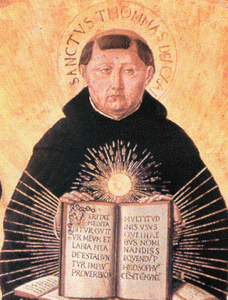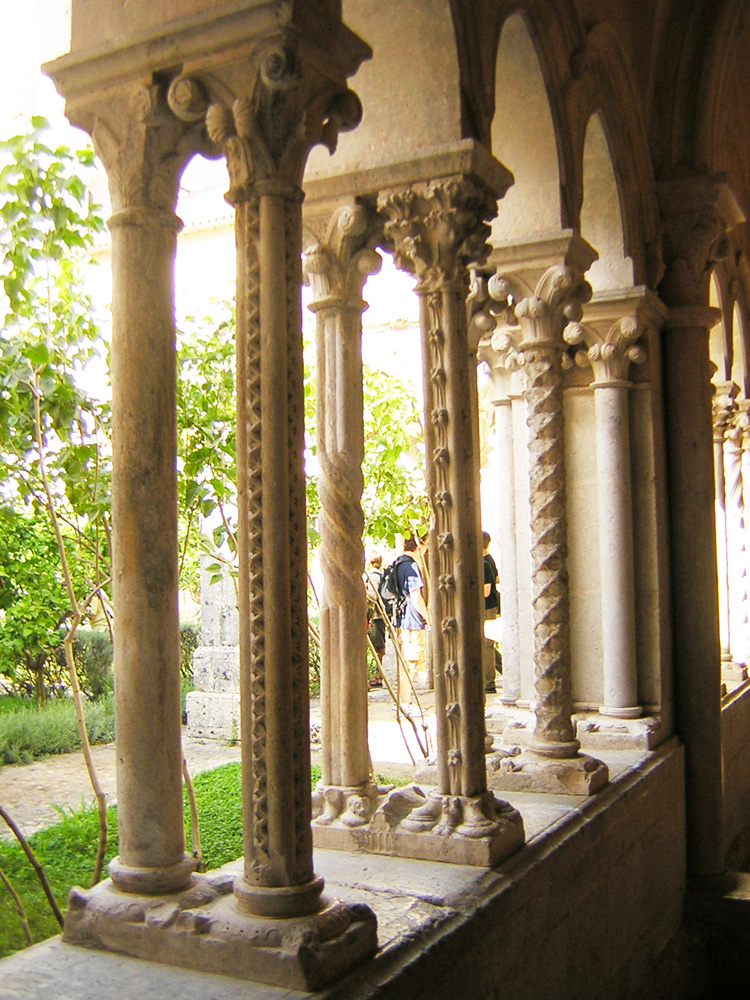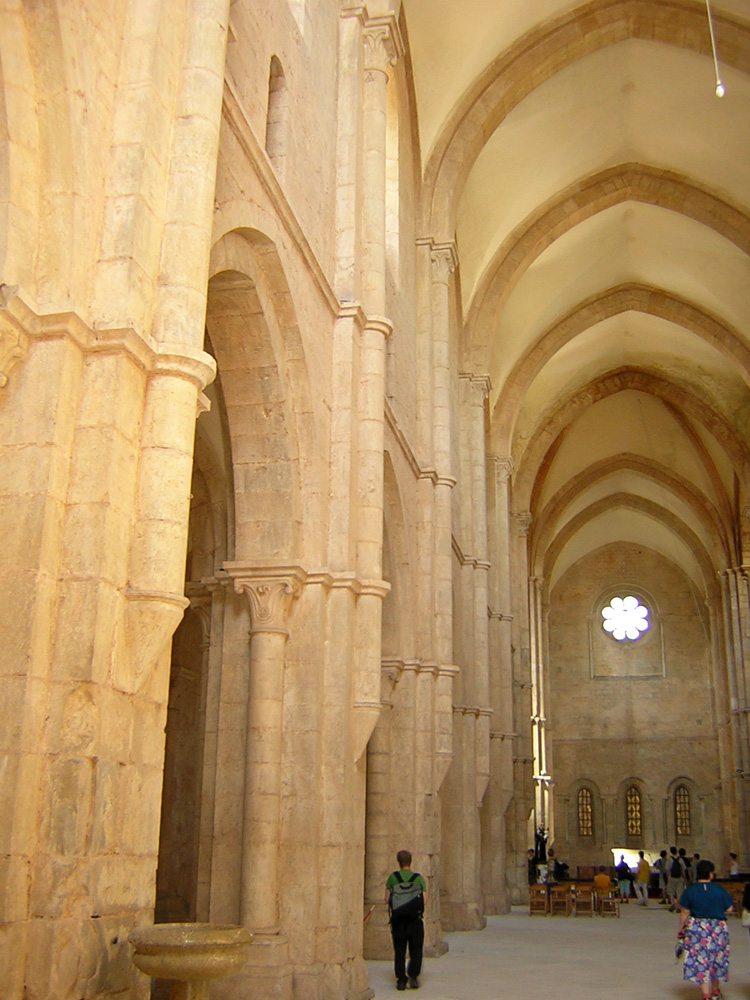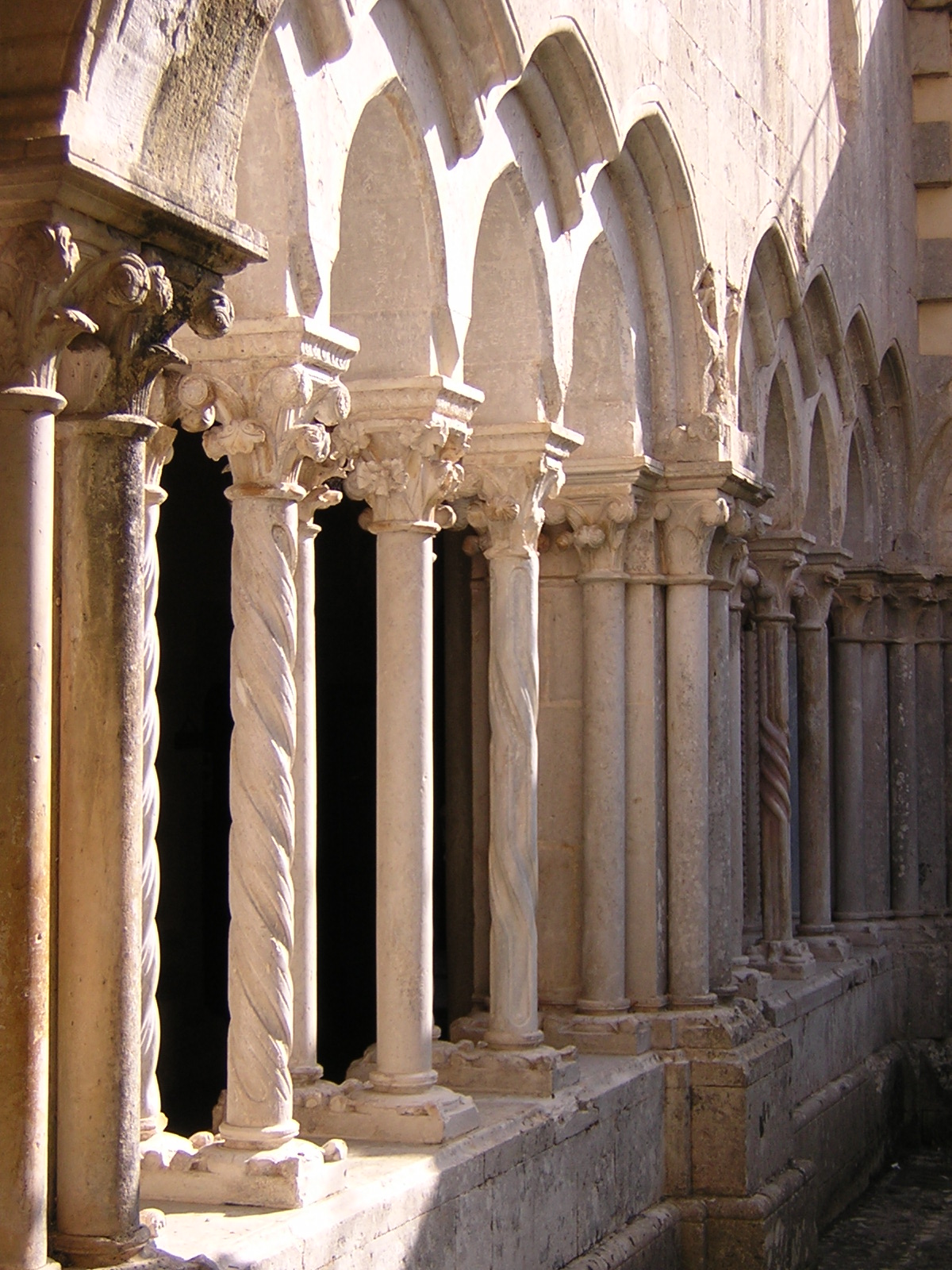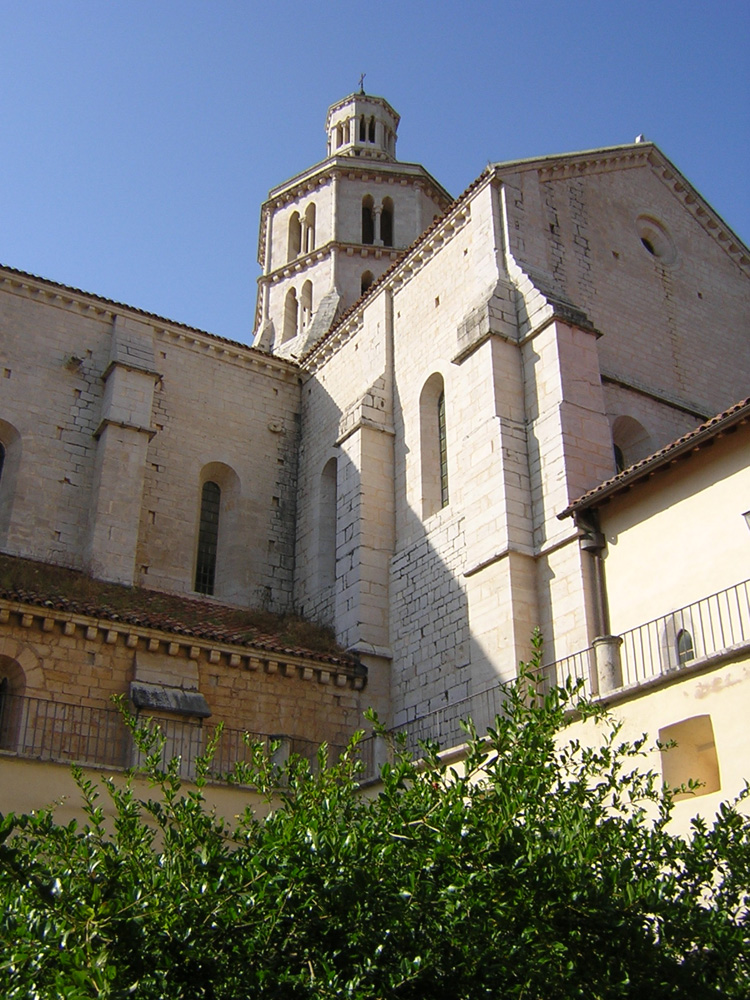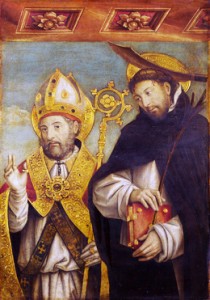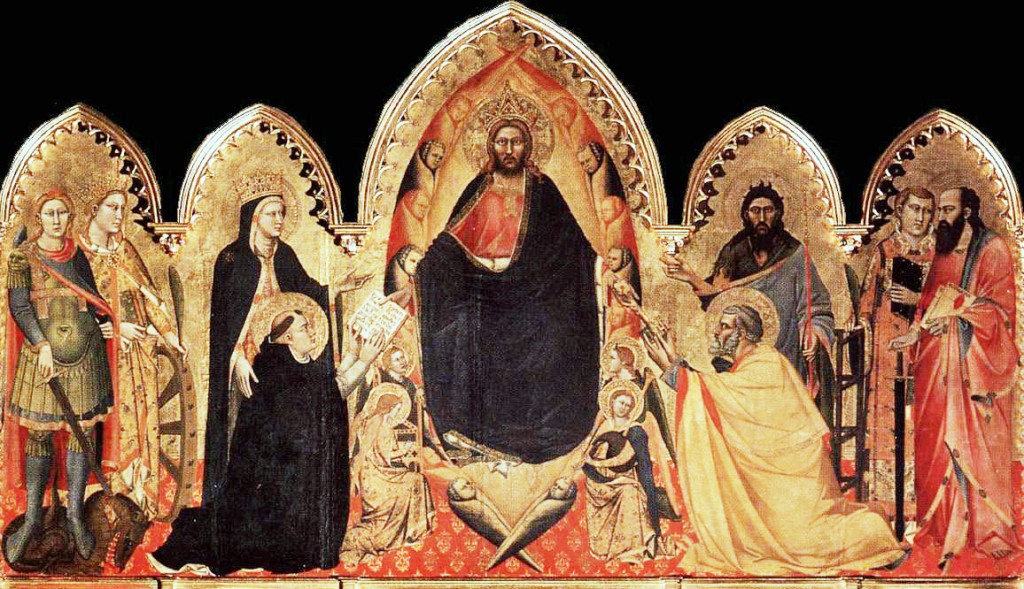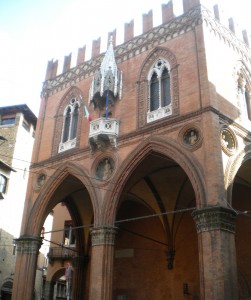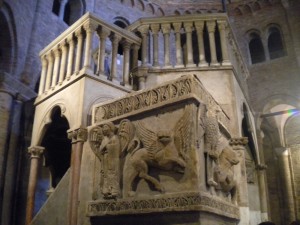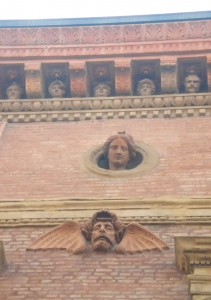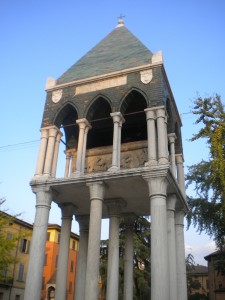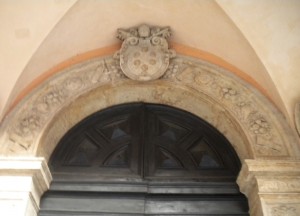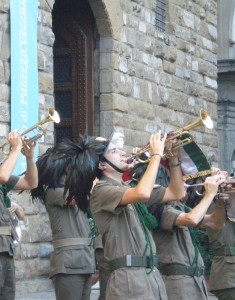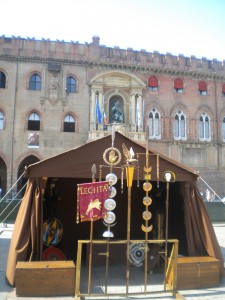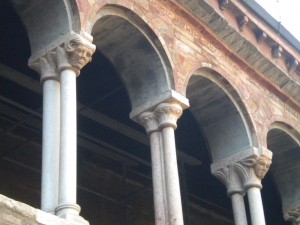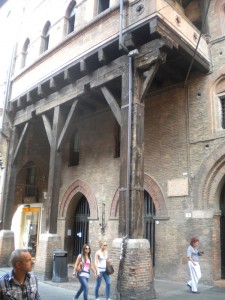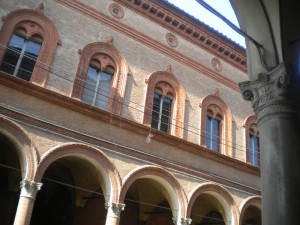Spot the Saint: Dominicani
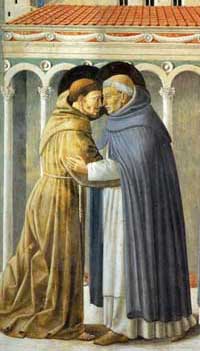
Since a friend I recently visited wanted something more challenging in our saint spotting, I’m starting in on some of my favorites, the monk saints, very easy to separate from non-monastic saints, but sometimes a real challenge to separate from each other.
I’m going to start with the Dominicans, who, as the most scholarly order (unless we want to argue about Jesuits) are near and dear to my heart. There are also Dominican nuns, but the monks are enough to start.
First-off, there are a lot of orders of monks. There aren’t as many orders of monks as there are of nuns; in fact, in chat around the Vatican, “How many orders of nuns are there?” is often held up as an example of an unanswerable question, since new unknown orders, often from the far east, are even today constantly showing up on pilgrimages with unfamiliar habits, novel origin stories and astounding enthusiasm. But there are still a lot of orders of monks. I spent a month once studying the differences between different mendicant orders beginning with the letter C, and after a month I was still shaky. There are, though, a few orders who, especially in art, far dominate the monastic landscape: Benedictines, Augustinians, Carmelites, Franciscans, Dominicans, and, later, Jesuits. (Carthusians not so much, since living in isolated hermetic cells, they don’t generally go out in public enough do things like work flashy miracles, become pope, or pose for altarpieces).
The Dominican and Franciscan orders were both founded at the beginning of the 1200s (in our mental chronology of Florence , Guelphs are fighting Ghibellines, universities have only existed for about a century, Dante and Giotto won’t be born for another half century, and the majority of historians will still say this is medieval, not yet Renaissance). Both orders, Franciscan and Dominican, began as movements away from the opulence, corruption and politicization of the church, toward a greater focus on austerity, poverty, and reaching out to the people.
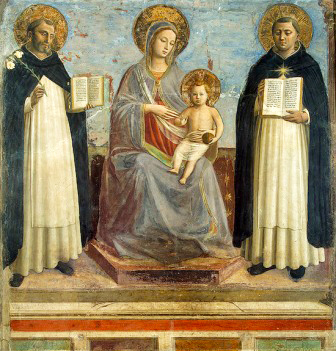
These were, at their inception, orders one joined when one wanted to become a monk in order to actually have a religious life, as opposed to older, more established orders which were a standard worldly career choice for a younger son. This didn’t stop both orders from becoming lucrative career options as they gained power and prestige over the next centuries, but one can’t help but respect the desire of Francis, Dominic and their early supporters to create an order for monks who wanted to be monks.
As for spotting Dominicans in art, there is no way around the simple characterization: Dominicans are the monks that look like penguins. They wear white robes with black cloaks and chaplets over them, producing a white underbelly with black around the top and sides. Dominican nuns look the same, only with headdresses. Confusingly, sometimes Dominicans (especially in summer) don’t wear the black overcape, so you do occasionally see them (in art and in real life) wearing all white, and thus practically indistinguishable from when Benedictines also sometimes wear all white, but happily, since the artists want us to be able to tell which saint is which, you can generally rely on them to paint the major Dominicans in their full penguinesque glory.
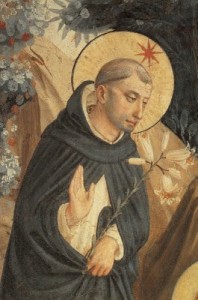 Saint Dominic (San Domenico) 1170-1221
Saint Dominic (San Domenico) 1170-1221
- Common attributes: Dominican habit, lily, star above head
- Occasional attributes: book, dog, rosary
- Patron saint of: The Dominican order, astronomy/ers
- Patron of places: Dominican Republic, to some extent Bologna, Calaruega (Spain)
- Feast days: August 8th (or 4th)
- Most often depicted: Preaching, receiving the rosary from Mary, standing around with other saints
- Relics: Bologna, Basilica di San Domenico
Dominic of Osma, as he’s sometimes called, must be differentiated from the earlier Benedictine bishop St. Dominic of Silos, but in general if someone says “Saint Dominic” they mean the Dominican. Founder of the Dominican order, Dominic was born in Calaruega Spain, but traveled extensively, and spent a lot of time in Italy, eventually dying in the university town of Bologna. He is often depicted with a star above his head, usually inside his halo, because before his birth his mother is supposed to have seen a miraculous star which foretold the coming baby’s coming greatness. This, and not any actual personal astronomical activity, is why he is the patron of Astronomers, but his general scholarly bent, and the even stronger thirst for knowledge which would characterize his order, make it a good fit. He was a bright young man, and attended university, but during a famine he sold all his possessions including his (expensive!) books in order to help the starving.
Arriving in Rome, he criticized the pomp and sparkly decor, and created his new order to reach people through direct preaching and good personal example, demanding inward and outward simplicity and austerity in order to provide the public a model of pure and pious living. The lily branch he carries represents his lifelong virginity, and is not specific to him, since technically any virgin saint can hold a lily branch, but usually it’s reserved for figures for whom virginity was an extra-big deal, like maidens who were martyred for refusing pagan husbands, or Gabriel, who makes the annunciation to the Virgin. If you see a Dominican with a lily, it’s Dominic.
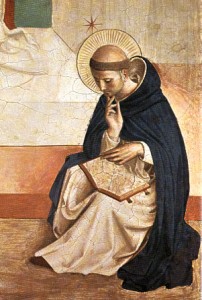
He also focused on intellectual rigor and the fierce pursuit of truth, since he believed truth of all kinds would lead one to better understand and therefore approach God, so he encouraged his followers to enthusiastic academic study. The dog which sometimes accompanies Dominic is a a pun, and a venerable one. The Dominicans are named after Dominic, but in Latin the plural “Dominicani” separates into Domini (of God) and cani (dogs), i.e. hounds of God, who sniff out truth. This was why he held major meetings in Bologna, home of the oldest university (founded ~1088). This thirst to sniff-out truth is also why the Dominicans, once they grew in power and numbers, were trusted by the papacy to be in charge of the Inquisition.
Dominic often holds a book in art, both because of his general scholastic interest and because he left some writings; generally any saint who wrote a book is entitled to hold one if the artist so chooses. The Dominicans are largely responsible for the spread of the rosary as a Catholic devotional tool. The Virgin Mary visited Dominic in 1214 and personally gave him the first rosary (archaeological evidence to the contrary not withstanding). You can still see the divine rosary in the Rosary Chapel in San Domenico in Bologna, just opposite the chapel where Dominic himself is buried in a stunningly-sculped tomb which everysculptor who was anysculptor at the time worked on (yes, even Michelangelo), and in the back of which you can see his skull (removed and set in an elaborate gold and crystal reliquary), and, posted on the wall behind, an X-ray of the tomb, so you can see the black & white outline of his skeleton within.
Dominic remains the most respected and important Dominican, so if you see a painting with just one Dominincan in it, and he doesn’t have anything distinctive enough to tell you who it is, it’s probably Dominic.
Saint Thomas Aquinas, 1225-1274
- Common attributes: Dominican habit, chubby, sun or star shaped burst of divine radiance in the middle of his chest (representing his brilliant scholarship), book (often glowing with divine radiance)
- Occasional attributes: Accompanied by angels carrying his books, and often whacking heathens over the head with said books. Don’t mess with Thomas Aquinas.
- Patron saint of: Universities, scholarship, students, scholasticism, exams
- Patron of places: Toulouse, Aquino, all universities
- Feast days: Jan 28th
- Most often depicted: Triumphing over Averroes and other “heathen” scholars, standing around with other saints
- Relics: Toulouse, all over the place
Son of the Count of Aquino and related to Holy Roman Emperors, young Tomas was earmarked in his youth to become a Benedictine monk, and likely take over for his uncle who was abbot of the Benedictine monastery at Monte Cassino, preserving a valuable political and economic seat for the family. Unfortunately, young Thomas was too pious and excited by theology to want to do anything so worldly as become a Benedictine abbot (Church reform; we needz it!) and determined instead to join this upstart, totally unimportant new order of Dominicans, who were all preaching to people and studying stuff, and had no money, and no cardinals and no lucrative landholdings, and only one saint, and even he (Dominic) had only been a saint for, like, a decade. Parents did not approve.
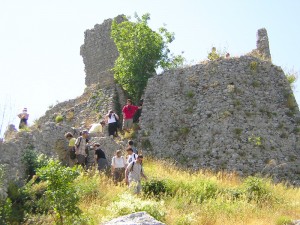
Thomas’s official hagiography describes many attempts by his parents to break his spirit and get him to become a Benedictine, including locking him in a remote tower and saying they wouldn’t let him out until he agreed. But even that didn’t do it, so his mother and/or brothers took the extreme step of sending a prostitute into the tower with him, because obviously if he broke down and slept with a prostitute that meant he would become a Benedictine?… Medieval parent logic is not the best… Nonetheless, Thomas was miraculously liberated from the tower by a well-timed lightning bolt, which broke open the tower wall and let him escape, and as implausible as it sounds, I’ve been to that hilltop and seen that tower and the scorch-marks and lightning damage are clearly visible, so it’s an undeniable fact that God/Zeus/Thor/Entropy was quite determined that Thomas Aquinas must become a Dominican.
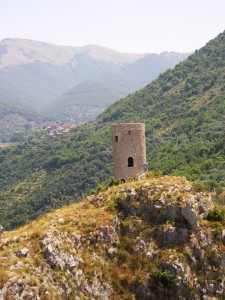
His family gave up at that point, and sent him to Naples, then Rome, to meet what Dominicans there were, since the order was very popular and charismatic and much-discussed (Monks who act like monks?!), and he was sent thence to Paris, to the Great University, where it was quickly discovered that he was very, very, very, very smart. The floodgates opened and the crowning masterpieces of scholasticism poured forth for the rest of his career.
In one sentence: Thomas Aquinas’ importance in the history of philosophy lay in his taking the works of Aristotle, which were at the time the only comprehensive set of textbooks on philosophical and scientific topics, and whose Organon(logical works) outlined clear, teachable methods for the organization of thought and logical proof, and reconciling them with Christian theology, thereby both making Aristotle’s textbooks usable in Chrisitan classrooms, and simultaneously providing scientific and technical answers to an enormous array of theological questions which had been hitherto unclear.
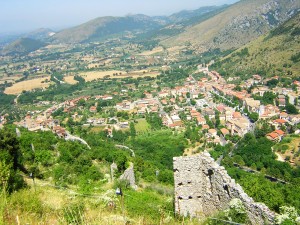
An example of the sort of question he took on was the question of Heaven and Judgment Day, i.e. if people who are dead now are in Heaven why do they need to be resurrected later on Judgment Day, or if they aren’t in Heaven now where are they? His special focus was the detailed mechanics of the soul, and its interface with body, emotion, thought, memory, sensation, pain, Heaven, Hell, knowledge and God. I cannot overstate the degree to which Aquinas’ application of Aristotle to these questions is dense, and meticulous, and dense, and erudite, and dense, and enlightening, and dense, and geometrically strict, and dense, and rigorous, and, did I mention, dense enough that I can assign two pages, count them, two pages of the Summa Theologica to my students and they come back the next day red-eyed and desperate.
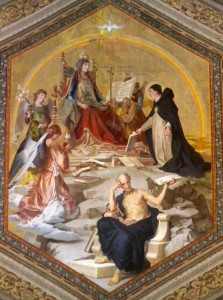
Even more desperate, however, was 13th century Europe’s thirst for a functional, systematic theology which could answer the accumulation of detailed questions that Christianity had picked up over the centuries, and Aquinas accomplished this so spectacularly that, despite the odd condemnation of specific comments here and there, he became the core of education, and through him the Dominicans skyrocketed in influence and fame. At the debate over his canonization, posthumous miracles were declared unnecessary since every article in his Summa was a miracle, and soon, just as one could call Aristotle simply “The Philosopher,” and Averroes “The Commentator,” Aquinas was, “The Theologian”. So synonymous was Aquinas with theology that in Dante’s Paradiso, it is Thomas Aquinas who comes and administers the oral masters’ exam in theology which one must pass in order to enter the higher levels of Heaven (Study up, folks!), and in 1568 when the decision was made to supplement the original Four Doctors of the Church (Augustine, Ambrose, Gregory and Jerome) with four more great theologians who made Christianity what it became, Aquinas was the youngest nominee by almost a millennium and the only one post-Charlemagne (his peers were Gregory Nazianus, Basil, & John Chrysostom). It was Aquinas who cemented the Dominicans’ position as the order of scholars, theologians, truth-seekers, and the appropriate group to lead the Inquisition.
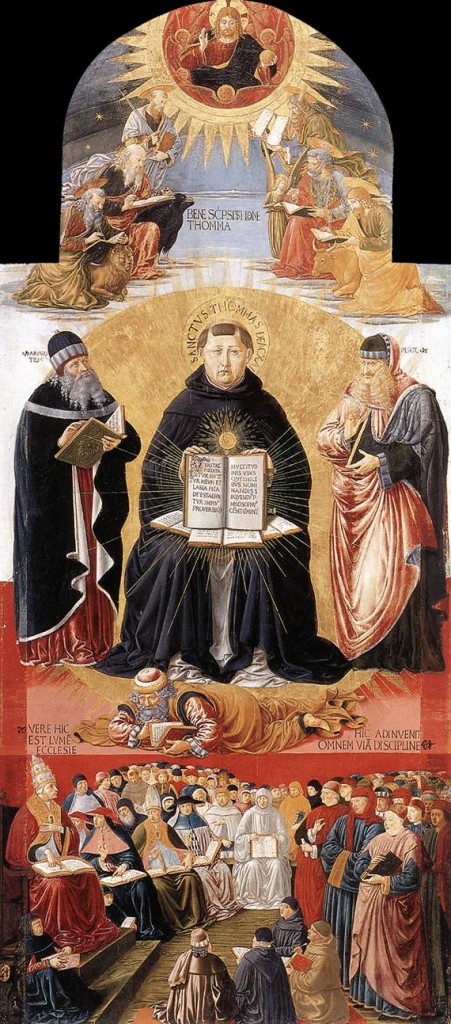 In art, Thomas Aquinas’ overwhelming brilliance is depicted as an overwhelming brilliance, radiating in a sun-like burst of gold from the middle of his chest (which is apparently where divine brilliance lives.) He is also usually chubby, one of these rare moments of physical honesty, indicating a saint who lived late enough that when he’s painted there’s somebody around who knew somebody who knew him and could tell the artist that Thomas Aquinas was, in point of fact, incredibly, credibly fat. So fat was he that the story I heard (and I heard it from a member of the Papal Curia so am inclined to accept it) is that when he died, upstairs in a little monastery at Fossanova outside Rome, they couldn’t get his body down the stairs. They had to break the window open and lower it with a pully, and then they didn’t have the means to carry it to town, so they employed mos teutonicus, a technique popularized during the second crusade, in which natural decomposition made it impractical to transport the bodies of crusader martyrs back from the holy land, so they would boil the corpse (with great ceremony) in a vat of vinegar to remove the flesh and separate the clean bones for transport. Only Thomas died at a little tiny monastery which didn’t have a good supply of vinegar, so they boiled him in red wine, so his bones are, to this day, rather purple, making fake relics easy to spot.
In art, Thomas Aquinas’ overwhelming brilliance is depicted as an overwhelming brilliance, radiating in a sun-like burst of gold from the middle of his chest (which is apparently where divine brilliance lives.) He is also usually chubby, one of these rare moments of physical honesty, indicating a saint who lived late enough that when he’s painted there’s somebody around who knew somebody who knew him and could tell the artist that Thomas Aquinas was, in point of fact, incredibly, credibly fat. So fat was he that the story I heard (and I heard it from a member of the Papal Curia so am inclined to accept it) is that when he died, upstairs in a little monastery at Fossanova outside Rome, they couldn’t get his body down the stairs. They had to break the window open and lower it with a pully, and then they didn’t have the means to carry it to town, so they employed mos teutonicus, a technique popularized during the second crusade, in which natural decomposition made it impractical to transport the bodies of crusader martyrs back from the holy land, so they would boil the corpse (with great ceremony) in a vat of vinegar to remove the flesh and separate the clean bones for transport. Only Thomas died at a little tiny monastery which didn’t have a good supply of vinegar, so they boiled him in red wine, so his bones are, to this day, rather purple, making fake relics easy to spot.
Other than standing symmetrically next to St. Dominic, Thomas Aquinas’ favorite activity in art is to sit on a throne surrounded by divine glory while he, or angels at his behest, clonk unbelievers over the head with his collected works.
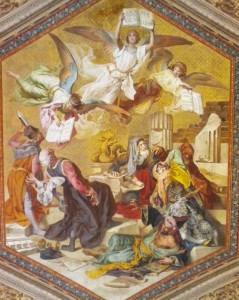
There’s a lovely fresco of this in Santa Maria Sopra Minerva in Rome, and a charming one in the Louvre (to the right) about 2 rooms away from the Mona Lisa. Averroes, the great Islamic commentator on Aristotle, is his most commonly-depicted enemy in these panels, since, while Averroes’ commentaries were indispensable reading for all students of Aristotle across Europe, certain details of his interpretations, and European interpretations of his interpretations, led Averroism to be so disproportionately demonized as a pernicious and contagious plague on scholars and universities, that in a lecture on Pomponazzi, I once heard a great professor attribute the general pessimism of Pomponazzi’s philosophy to, “Well, but he was down there in Minas Morgul in Padua which was full of Averroism.” Clearly, it is the most natural of human desires to want see Sam squash Shelob with the Summa Contra Gentiles.
Before moving on, let me share a few more photos from the lovely, and peculiarly Gothic, Cistercian (more Cs!) monastery at Fossanova where Thomas Aquinas died, or, to be more accurate, where the substantial form of his existence terminated material contact in order for its Intellect to participate directly in the Divine essence, which will serve as an immaterial but completely perfected substitute for the material Passive Intellect until Judgment Day:
But, wait, there’s more!
After all, when you have Dominic in the middle of a painting, you need TWO other major Dominicans to stand on either side and be symmetrical:
Saint Peter Martyr (Pietro Martire) aka. Peter of Verona, 1206-1252
- Common attributes: Dominican habit, big knife sticking out of his head, lots of blood streaming down his head
- Occasional attributes: Knives sticking out of his shoulders or back, martyr’s palm, book, more blood!
- Patron saint of: Inquisitors, midwives
- Patron of places: Puerto Rico, Verona, Milan
- Feast days: April 6th
- Most often depicted: Standing around with other saints, especially Dominicans, being murdered
- Relics: Basilica of Sant’Eustorgio, Milan
“Peter Martyr is a martyr! Did we mention he’s a martyr! Because he’s totally a martyr! Look, he has blood and knives coming out of him and everything! Because we Dominicans totally have a martyr, and that totally makes us as good as all the older monastic orders! So people like Thomas Aquinas’ parents can totally stop picking on us now! Also, we totally got a martyr before the Franciscans did! Because Francis totally failed to get martyred that one time he went to the Holy Land and met with the Sultan and was gonna throw himself in fire to prove his faith, and the Sultan was like, ‘No, no, you’re a sweet boy, I believe you, now go home’. Because we’re totally better than the Franciscans if we got a martyr first!”
I wish this were more of an exaggeration than it was, but there was a lot of politics and competition in the first decades of these new orders, and one really did have to get a martyr to be taken seriously. There was a genuine race. The friendly rivalry between the Franciscans and Dominicans did have a legitimate doctrinal crux, the Dominicans believing that the best road to heaven is through truth, knowledge and study, i.e. the mental organ of the intellect, and the Franciscans believing the best road to heaven was through love, emotion and passionate faith, i.e. the mental organ of the will. But they were also two new growing powers in the Church, exercising influence, and through which the ambitious could aim to exercise influence, and there was a power race as they established themselves. They needed Saint Cred, as one might call it.
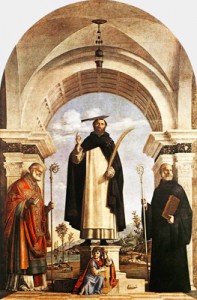 Peter Martyr was knifed (or axed) in the head by a Milanese Cathar, a blow which cut off the top of his skull, and after writing “Credo in unum deum” in his own blood, was stabbed some more, then taken home by friends, where it took him five days to die. The fact that he still gets to have blood dripping down the sides of his head to remind us of this is not unreasonable. What may be unreasonable are some questions about the motives for the murder. Peter had been appointed Inquisitor General for northern Italy, where his main job was to weed out the Cathar heresy, yet another version of the old Manichean heresy (belief, not in one all-powerful God but in the semi-independence of an Evil Force opposing God’s Good Force) which plagued great men from Augustine to Voltaire. The heresy was rampant in northern Italy, especially around Milan and ever-impregnable and equally-incomprehensible Venice, and there is some debate over whether the assassins went after Peter over theology and his assaults on Cathars, or whether it was because he’d been violently badmouthing Milan and Venice in his sermons, damaging the cities with his political influence, and generally making worldly enemies.
Peter Martyr was knifed (or axed) in the head by a Milanese Cathar, a blow which cut off the top of his skull, and after writing “Credo in unum deum” in his own blood, was stabbed some more, then taken home by friends, where it took him five days to die. The fact that he still gets to have blood dripping down the sides of his head to remind us of this is not unreasonable. What may be unreasonable are some questions about the motives for the murder. Peter had been appointed Inquisitor General for northern Italy, where his main job was to weed out the Cathar heresy, yet another version of the old Manichean heresy (belief, not in one all-powerful God but in the semi-independence of an Evil Force opposing God’s Good Force) which plagued great men from Augustine to Voltaire. The heresy was rampant in northern Italy, especially around Milan and ever-impregnable and equally-incomprehensible Venice, and there is some debate over whether the assassins went after Peter over theology and his assaults on Cathars, or whether it was because he’d been violently badmouthing Milan and Venice in his sermons, damaging the cities with his political influence, and generally making worldly enemies.
Either way, the Dominicans knew how to lobby, and after dying April 6th 1252, Peter Martyr was declared a martyr and canonized March 9th 1253, a record-breaking seven-month turnaround, still the fastest canonization on record, which proves both that the current administration actually are taking a sensible amount of time with John Paul II, and that the Dominicans were really, really ready to to publicize their martyr.
Peter Martyr was also the one who expelled the possessed/demonic horse that molested a crowd he was preaching, one of few accredited miracles (apart from St. Zenobius’ posthumus resurrection of an elm tree) to have actually taken place in good old Florence.
And now, Spot the Saint quiz time.
You know everyone here except the figure in armor all the way on the left, and there you can probably guess.

